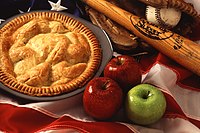| Revision as of 01:12, 4 March 2015 editLembit Staan (talk | contribs)Autopatrolled, Extended confirmed users, Pending changes reviewers, Rollbackers69,433 edits →Modern computer systems: rm OR: 'icon' in computing is not what this article claims to be about.← Previous edit | Revision as of 14:19, 13 April 2015 edit undoIdell (talk | contribs)Extended confirmed users, Pending changes reviewers, Rollbackers4,939 edits Added a Citation.Tag: Visual editNext edit → | ||
| Line 10: | Line 10: | ||
| ==Icons versus symbols== | ==Icons versus symbols== | ||
| *An ''icon'' is a graphic device that represents some object or action, the graphic device being ascribed.{{ |
*An ''icon'' is a graphic device that represents some object or action, the graphic device being ascribed.<ref>{{Cite web|title = Maybe icons should represent the action instead of the medium / device?|url = http://graphicdesign.stackexchange.com/questions/50048/maybe-icons-should-represent-the-action-instead-of-the-medium-device|website = graphicdesign.stackexchange.com|accessdate = 2015-04-13}}</ref> | ||
| *A ''symbol'' has only the meanings ascribed to itself, representing only a concept and not recognizable as a particular object.{{cn|date=February 2015}} | *A ''symbol'' has only the meanings ascribed to itself, representing only a concept and not recognizable as a particular object.{{cn|date=February 2015}} | ||
Revision as of 14:19, 13 April 2015
For other uses of the term, see Icon (disambiguation).| This article does not cite any sources. Please help improve this article by adding citations to reliable sources. Unsourced material may be challenged and removed. Find sources: "Secular icon" – news · newspapers · books · scholar · JSTOR (October 2006) (Learn how and when to remove this message) |
| This article possibly contains original research. Please improve it by verifying the claims made and adding inline citations. Statements consisting only of original research should be removed. (February 2015) (Learn how and when to remove this message) |
| This article or section possibly contains synthesis of material that does not verifiably mention or relate to the main topic. Relevant discussion may be found on the talk page. (February 2015) (Learn how and when to remove this message) |



A secular icon is an image or pictograph of a person or thing used for other than religious purpose. (See icon for such use.)
Icons versus symbols
- An icon is a graphic device that represents some object or action, the graphic device being ascribed.
- A symbol has only the meanings ascribed to itself, representing only a concept and not recognizable as a particular object.
Language and cultural neutrality
International standards have been developed to harmonize icons and symbols. The latter can be seen particularly at international airports and on roadside signs, to assist travelers. Icons are also becoming standardised for consumer electronics and for automobile controls.
Warning symbols, such as the biological-hazard, or biohazard, symbol, are sometimes not self-explanatory but are well-known within the relevant art or craft; they are not icons, but symbols.
Political and governmental iconic symbols
Edifices such as the United States Capitol Building or the White House, the Elizabeth Tower, and Saint Basil's Cathedral have become representations respectively of the Governments of the United States of America, the United Kingdom, and Russia. Other symbols (such as the bulldog for the United Kingdom, the bald eagle for the United States, the bear for Russia, or the Chinese dragon for China) are used to represent nations, as distinct from (yet inclusive of) governments.
See also
- Cultural icon
- Semeiotic, the analysis of icons and symbols.
- Symbol
References
- "Maybe icons should represent the action instead of the medium / device?". graphicdesign.stackexchange.com. Retrieved 2015-04-13.